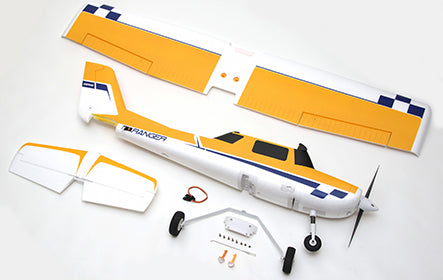Understanding the principles of aerodynamics is essential for anyone interested in RC model airplanes. These miniature flying machines are not just toys; they are intricate systems that rely on the same physical laws that govern full-sized aircraft. In this article, we will explore the fundamental concepts of aerodynamics and how they apply to RC model airplanes.

What is Aerodynamics?
Aerodynamics is the study of the behavior of air as it interacts with solid objects, such as RC model airplanes. The key forces at play in this interaction are lift, weight, thrust, and drag. Understanding these forces is crucial for optimizing flight performance.
- Lift: This is the force that allows the airplane to rise off the ground. It is generated by the wings as air flows over and under them.
- Weight: The force of gravity pulling the airplane down. It must be countered by lift for the airplane to ascend.
- Thrust: This is the forward force produced by the airplane's engine or motor, propelling it through the air.
- Drag: The resistance force that opposes thrust, caused by air friction and pressure differences.
The Role of Wing Design in RC Model Airplanes
One of the most critical aspects of RC model airplanes is wing design. The shape and size of the wings significantly influence the amount of lift generated. For instance, a wing with a larger surface area can produce more lift, but it may also increase drag. Therefore, finding the right balance is essential.
There are various wing shapes, including:
- Rectangular Wings: Simple and easy to construct, but may not be the most efficient.
- Elliptical Wings: Offer excellent lift-to-drag ratios, commonly seen in high-performance aircraft.
- Tapered Wings: Combine the benefits of both rectangular and elliptical designs, providing a good balance of lift and drag.
Understanding Control Surfaces in RC Model Airplanes
Control surfaces are vital for maneuvering RC model airplanes. These include ailerons, elevators, and rudders, each serving a specific purpose:
- Ailerons: Located on the wings, they control roll and help the airplane turn.
- Elevators: Found on the tail, they manage pitch, allowing the airplane to climb or descend.
- Rudders: Also on the tail, they control yaw, helping to steer the airplane left or right.
Conclusion: Mastering Aerodynamics for Better Flight
In conclusion, mastering the basics of aerodynamics is crucial for anyone looking to excel in flying RC model airplanes. By understanding the forces at play and how wing design and control surfaces affect flight, enthusiasts can enhance their flying experience. Whether you are a beginner or an experienced pilot, a solid grasp of these principles will undoubtedly lead to more successful flights.
As you continue your journey in the world of RC model airplanes, remember that practice and experimentation are key. The more you fly, the better you will understand the mechanics of flight.








